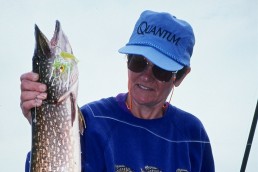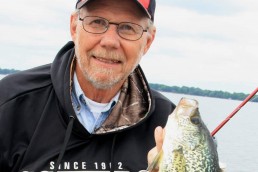Don’t Overlook the Subtle Changes of Summer
SHARE THIS POST
Understanding the outdoors can be confusing, as no two years are exactly the same. Prevailing weather conditions can speed up or slow down the normal periods of each season too. That’s why if you have a good experience on the water and have the “why it happened” reinforced, it then allows you to put all the gained information into the correct place in your bank of knowledge.
One of my best examples of this happened years ago on a small natural flowage during the last week of August. The lake I was at had a good number of decent-sized pike. I could always count on it coughing up a couple of good fish later in October along with some smaller ones that are well-proportioned catches. These would also provide a good battle if they made it through another couple of seasons.
When I pulled up to the boat launch that day I found a canoe tied to the dock at the ramp. But what really got my attention was a rather long white object in the water next to the canoe.
As I dropped the boat in the canoe owner pulled up to get his craft out.
That’s when I noticed that the white object was a pike, and a rather large one at that.
To make a long story short, he had caught it on 8-pound-test line and on a Mepps spinner. It should’ve made short work of the 8-pound test, but it stayed out of the heavy weeds until he could bring the fish to net. We were both at the lake again a few days later. I found out that he had entered it in a local contest at 42 inches, weighing 18 1/2 pounds.
But back to that day I first saw it.
Are you enjoying this post?
You can be among the first to get the latest info on where to go, what to use and how to use it!
After I launched and started fishing, I then had my best day ever on the lake for pike. I let all my fish go, but if I counted the top five limit, the biggest was 37 inches long and the other four were all over 30 inches.
At the end of the day, I couldn’t answer the “why” or “why it happened” and the reasons the big pike were turned on. But—this is why it pays to read outdoors articles to soak up the knowledge provided in the text—I did get a real solid answer, eventually. As I recall, it didn’t come right away. In fact, it was several months later and came via the writing of Al Lindner. He referred to it as the “post-summer part” of the angling calendar. In essence, there is a time where—though late summer can still produce highs in the 80s—the nights do start getting cooler. This period is basically during the initial cooling that takes place at the end of summer. This pattern triggers fish to begin to prepare for the fall and subsequent long, cold winter. This portion of time doesn’t last long, but if you can recognize it and be on the water to capitalize on this the fishing can be very good for a week to up to 10 days.
And, it’s not just pike that get active.
On the deeper lakes, pike move up to the shallower weedy flats to feed. I believe on my little flowage that the bigger fish were already there, especially since the depth was and is 10 feet or less in most of the area. The consecutive cooler nights just tripped their activity trigger. The fish came out of the thick weeds where they were spending the hot summer months under and would now chase down anything that looked like a meal. But the other species may relate differently, though. Crappies can move from more of a suspending lifestyle and filter back into available weed cover along the deeper weed edges. River smallmouths can start to school up as they get ready for their fall migrations to deeper pools, or from the feeder river, where they spent the summer in a larger main river that will eventually become their winter home. But virtually every species will start to feed more to prepare for the cold-water season.
The best way to identify this opportunity is to watch the temperatures. If the weatherman starts calling in those cooler nights for lows, regardless of the highs stated, take it to heart. And once those evenings begin to turn lower still and stay cooler for consecutive days, look for that fish activity to increase. This may not even happen until September, but I know in my neck of the woods the river smallmouths do seem to have been moving from the feeder rivers to the Wolf River to winter a little later than they used to. And, the river water temperatures have stayed warmer into early November over the recent years. But remember that initially you aren’t looking for major temperature swings at this time, just the subtler ones.
If you tune in and can recognize this pattern and apply the “why” and “why it happened,” you can then catch more and bigger fish this season.
MWO
SHARE THIS POST
Did you enjoy this post?
You can be among the first to get the latest info on where to go, what to use and how to use it!
Tom Luba
Tom Luba is a freelance outdoor writer living in New London, Wis. He has written about open water fishing for more than 35 years.



